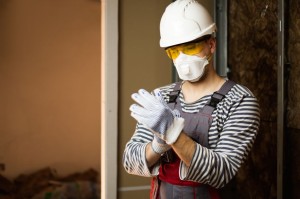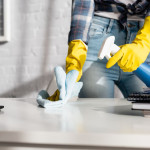 Asbestos used to be one of the most common building materials. As a mineral fiber, this material was excellent for several construction uses, including insulation, siding, plaster, roofing materials, siding materials, linoleum, paint, vinyl, caulking, and much more. It’s why it was so widely used in the construction of homes and businesses before we learned how dangerous exposure to it could be. From the 1940s to the 1970s, asbestos was an integral part of the construction world.
Asbestos used to be one of the most common building materials. As a mineral fiber, this material was excellent for several construction uses, including insulation, siding, plaster, roofing materials, siding materials, linoleum, paint, vinyl, caulking, and much more. It’s why it was so widely used in the construction of homes and businesses before we learned how dangerous exposure to it could be. From the 1940s to the 1970s, asbestos was an integral part of the construction world.
But now we know that asbestos exposure is highly dangerous. It can cause lung cancer and other long-term health problems. The good news is that asbestos is only dangerous when it’s disturbed and released into the air, which is reassuring to know since there is a good chance that any building built in the 70s or earlier likely contains asbestos. Unfortunately, since asbestos is so common when renovating an older building, you will likely undercover some of it. What do you do then?
If you think your building contains asbestos and are planning a renovation or construction project, you need a professional to take samples and analyze them. They can determine if asbestos is present and devise a plan for safely removing or covering the asbestos material. Any type of work with asbestos materials or removal requires specialized training to ensure no fibers are released, and exposure is minimized. Make sure your asbestos professionals have adequate training to reduce your exposure and the release of dangerous fibers into the air.
How do you clean up after asbestos?
Your asbestos team should be trained to remove or cover all asbestos materials to prevent exposure safely. This may involve sealing off an area of a construction site to ensure a secure zone for asbestos abatement or removal. Some asbestos contractors may even use a wetting agent with a hand sprayer before removal to ensure particles are not dispersed. What comes next after the hazardous material is safely removed or covered? Cleaning.
Cleaning up after disturbing asbestos is a delicate thing. You must take great care not to use cleaning methods that may disperse asbestos particles in the air. For example, you must avoid sweeping, dusting, sanding, drilling, or using abrasive brushes or pads in any area with asbestos particles. Instead, we recommend safely wet wiping down all surfaces (while masked and wearing proper PPE) to remove particles. You may use a vacuum as long as it has a HEPA filter.
When cleaning up an area with potential asbestos exposure, the most important thing to remember is to seal the area off. The affected area must be labeled as hazardous and blocked for general access unless you have the proper PPE. Ensure that any heating or ventilation ducts are turned off so airborne particles are not transmitted throughout the HVAC system. Ensure you avoid tracking dust or materials out of the secured zone as you walk or move materials.
As a post-construction cleaning crew, we know how dangerous asbestos is and take every precaution to keep our team safe. If you are considering hiring a post-construction crew, please notify us if asbestos removal or abatement occurred during your project so we can take necessary precautions. Asbestos is hazardous, so working in a system with asbestos requires specialized care and training for your safety and ours.








